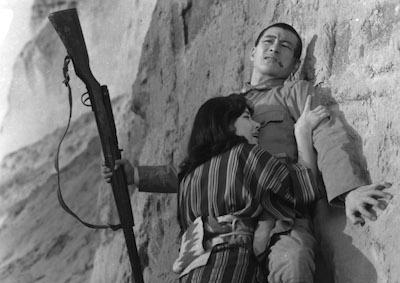Nikutai no Mon
Part social realist drama, part sadomasochistic trash opera, Gate of Flesh (1964) paints a dog-eat-dog portrait of postwar Tokyo. The film takes the point of view of a gang of tough prostitutes working out of a bombed-out building. When a lusty ex-soldier lurches into its midst, the group’s most sensitive member is tempted to break one of its most important rules: no falling in love. From the women’s bold, color-coded dresses to the unorthodox use of superimposition effects and theatrical lighting, this is director Seijun Suzuki at his most astonishingly inventive.
35mm, color, in Japanese with English subtitles, 90 min. Production: Nikkatsu. Producer: Kaneo Iwai. Director: Seijun Suzuki. Based on the novel by Taijiro Tamura. Screenwriter: Goro Tanada. Cinematographer: Shigeyoshi Mine. Production Design: Takeo Kimura. Editor: Akira Suzuki. Music: Naozumi Kuzuu. With: Jo Shishido, Satoko Kasai, Yumiko Nogawa, Kayo Matsuo, Tomiko Ishii.






 Mobile Navigation
Mobile Navigation

